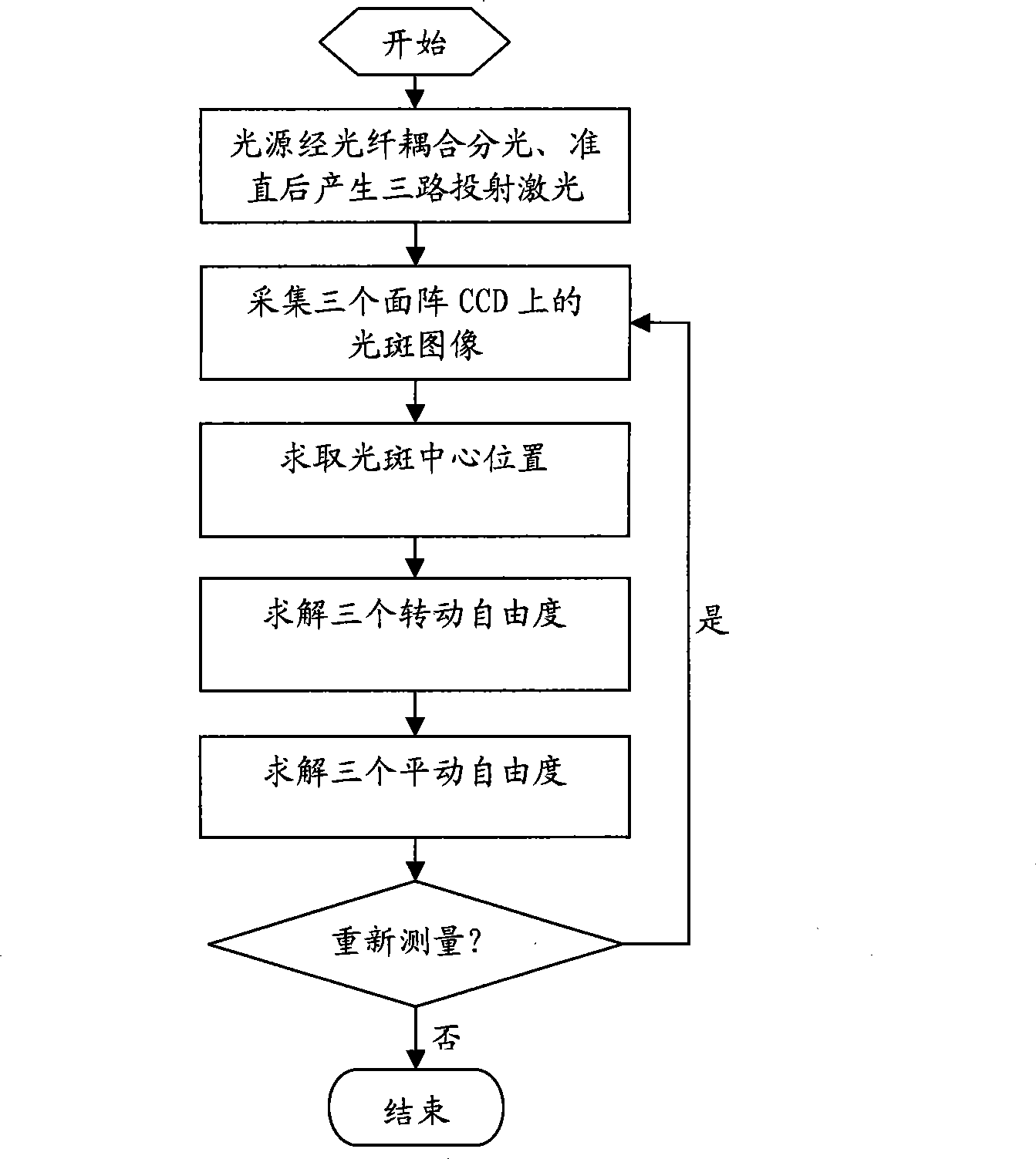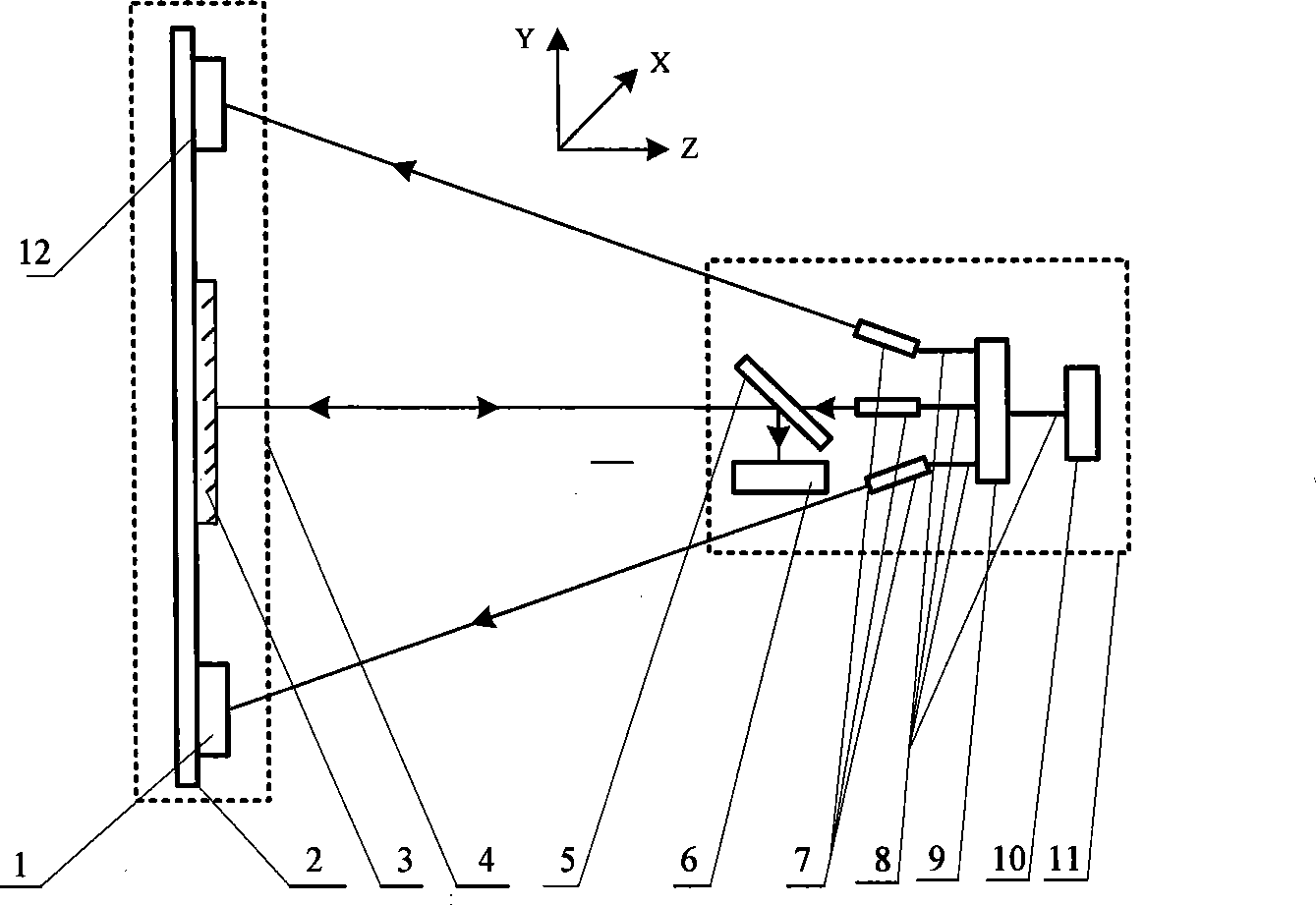In-orbit monitoring method for 6 freedom change between space three-linear array CCD camera lens
A degree of freedom, three-line array technology, applied in the field of aerospace satellite photogrammetry, can solve problems such as complicated process, inability to perform real-time monitoring, and long time consumption
- Summary
- Abstract
- Description
- Claims
- Application Information
AI Technical Summary
Problems solved by technology
Method used
Image
Examples
Embodiment Construction
[0029] Such as figure 1 , 2 Shown is a flow chart and a schematic diagram of the monitoring method of the present invention. figure 2 Middle: 4 and 11 represent camera lens B and camera lens A respectively, 2 is the measurement bracket, the measurement bracket is located on the camera lens B, and is used to rigidly fix the laser reflection receiving device. The laser reflection receiving device includes a plane mirror 3, a second surface Array CCD12 and the third array CCD1. The laser emitting and receiving device is located on the camera lens A, and the laser emitting and receiving device includes a semiconductor laser light source 10 (other laser light sources can also be selected), a fiber coupler 9, a half-mirror 5 and the first area array CCD6, and the 9 is an optical fiber coupling 7 is a collimator (three), used to collimate the three lasers, and 8 is an optical fiber (four).
[0030] Since the measurement bracket is rigidly fixed with a lens B to be tested of the a...
PUM
 Login to View More
Login to View More Abstract
Description
Claims
Application Information
 Login to View More
Login to View More - R&D
- Intellectual Property
- Life Sciences
- Materials
- Tech Scout
- Unparalleled Data Quality
- Higher Quality Content
- 60% Fewer Hallucinations
Browse by: Latest US Patents, China's latest patents, Technical Efficacy Thesaurus, Application Domain, Technology Topic, Popular Technical Reports.
© 2025 PatSnap. All rights reserved.Legal|Privacy policy|Modern Slavery Act Transparency Statement|Sitemap|About US| Contact US: help@patsnap.com



